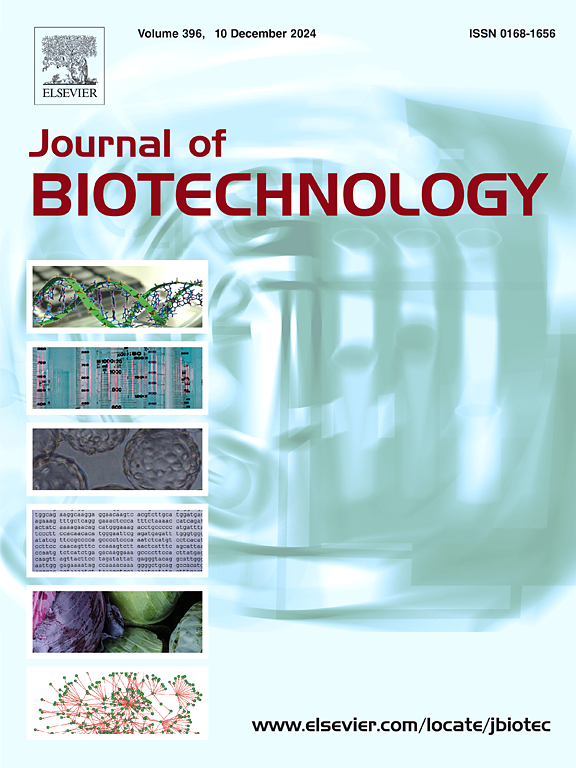Numerical simulation analysis of flow field and fabrication of cells-osteochondral scaffold constructs in a spinner flask bioreactor
IF 3.9
2区 生物学
Q2 BIOTECHNOLOGY & APPLIED MICROBIOLOGY
引用次数: 0
Abstract
With the vigorous development of bone/cartilage tissue engineering research, the construction system for in vitro preparation of tissue engineered osteochondral repair substitutes is undergoing a transformation from static culture mode to 3D dynamic culture mode. However, for dynamic culture mode, many problems such as the selection of cultivation environment and the optimization of condition parameters need to be solved. In this study, computational fluid dynamics (CFD) was used to simulate and predict the stress conditions of adipose derived stem cells-chitosan7/gelatin3/Nano-hydroxyapatite (ADSCs-Cs7/Gel3/nHAP) structures and ADSCs-bone-derived scaffold structures, as well as the flow field distribution in spinner flask (SF) at different rotational speeds. Finally, the appropriate operating conditions of SF were optimized. The simulation results showed that SF generated two fluid cycles bounded by the bottom edge of the stirring paddle in the entire fluid flow region, with a fluid circulation region exhibiting a relatively static flow field distribution (compared with the first two cycles) directly below the stirring axis. There was a moderate dynamic pressure and speed under the stirring paddle, making this area the most suitable for fixing the cell-scaffold constructs. Under different rotational speed conditions, the dynamic pressure and fluid shear force of the constructs in SF were positively correlated with the speed. Overall, considering all factors, 50 rpm and 70 rpm were determined as the preferred rotational speed conditions for the ADSCs-Cs7/Gel3/nHAP constructs and ADSCs-derived-bone scaffold constructs in SF, respectively. Subsequently, the cell-scaffold complex cultured under SF was implanted at the site of osteochondral defect in New Zealand rabbits, and it was found that new tissues were formed after 4 weeks of culture. These results indicate that SF cultured scaffolds are suitable for repairing rabbit osteochondral defects.
旋转烧瓶生物反应器中细胞-骨软骨支架结构流场及制备的数值模拟分析
随着骨/软骨组织工程研究的蓬勃发展,体外制备组织工程骨软骨修复替代物的构建体系正经历着从静态培养模式向三维动态培养模式的转变。但对于动态培养模式,需要解决培养环境的选择、条件参数的优化等诸多问题。本研究采用计算流体力学(CFD)方法,模拟和预测了脂肪源性干细胞-壳聚糖7/明胶3/纳米羟基磷灰石(ADSCs-Cs7/Gel3/nHAP)结构和adscs -骨源性支架结构在不同转速下的受力情况,以及旋转瓶(SF)内的流场分布。最后,对顺丰的适宜操作条件进行了优化。仿真结果表明,SF在整个流体流动区域内产生了两个以搅拌桨底边为界的流体循环,其中一个流体循环区域(与前两个循环相比)在搅拌轴正下方呈现相对静态的流场分布。搅拌桨下的动压力和速度适中,使该区域最适合固定细胞-支架结构。在不同转速条件下,SF结构体的动压力和流体剪切力与转速呈正相关。综上所述,考虑到所有因素,我们确定50 rpm和70 rpm分别为SF中ADSCs-Cs7/Gel3/nHAP构建和adscs衍生骨支架构建的首选转速条件。随后,将SF培养的细胞支架复合物植入新西兰兔骨软骨缺损部位,培养4周后发现新组织形成。结果表明,SF培养的支架是修复兔骨软骨缺损的理想材料。
本文章由计算机程序翻译,如有差异,请以英文原文为准。
求助全文
约1分钟内获得全文
求助全文
来源期刊

Journal of biotechnology
工程技术-生物工程与应用微生物
CiteScore
8.90
自引率
2.40%
发文量
190
审稿时长
45 days
期刊介绍:
The Journal of Biotechnology has an open access mirror journal, the Journal of Biotechnology: X, sharing the same aims and scope, editorial team, submission system and rigorous peer review.
The Journal provides a medium for the rapid publication of both full-length articles and short communications on novel and innovative aspects of biotechnology. The Journal will accept papers ranging from genetic or molecular biological positions to those covering biochemical, chemical or bioprocess engineering aspects as well as computer application of new software concepts, provided that in each case the material is directly relevant to biotechnological systems. Papers presenting information of a multidisciplinary nature that would not be suitable for publication in a journal devoted to a single discipline, are particularly welcome.
 求助内容:
求助内容: 应助结果提醒方式:
应助结果提醒方式:


